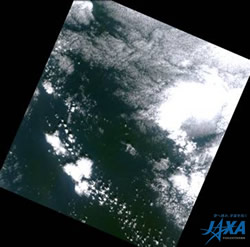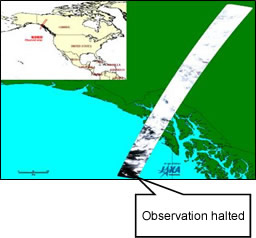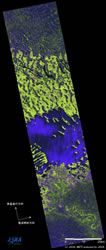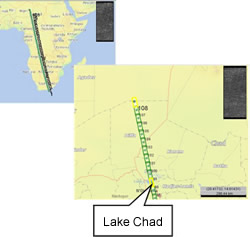DAICHI (ALOS) Operation Completion
Japan Aerospace Exploration Agency (JAXA)
The Japan Aerospace Exploration Agency (JAXA) had been trying to communicate with the Advanced Land Observing Satellite "DAICHI" (ALOS) for about three weeks after it developed a power generation anomaly; however, we decided to complete its operations by sending a command* at 10:50 a.m. on May 12 (Japan Standard Time) as we found it was impossible to recover communication with the satellite.
DAICHI, launched on January 24, 2006 (JST), had been operated for over five years, which was its target life and well beyond its design life of three years, and it achieved many fruitful results related to earth observations.
We would like to express our profound appreciation to all pertinent organizations and personnel for their cooperation with our DAICHI operations. JAXA continues to investigate the causes of the power generation anomaly based on the data we have acquired from the satellite, and will report the result to the Space Activities Commission of the Ministry of Education, Culture, Sports, Science and Technology, Japan.
*) Sending a command from the ground to halt DAICHI's onboard transmitter and batteries
DAICHI's Achievements
(1) Shot 6.5 million scenes of images by observing all over the Earth for five years.
(2) Contributed to emergency observations of disaster-stricken areas.
- Provided information both in Japan and overseas by observing about 100 large-scale disaster-stricken areas per year in accordance with requests. (Received a letter of appreciation from China after the great Sichuan earthquake)
- In addition to the filming at the time of an emergency, the DAICHI also contributed to compiling hazard maps and monitoring active volcanoes.
- Took 400 scenes at the time of the Great East Japan Earthquake to contribute to information provision to 10 prefectural and municipal governments and organizations as well as to the central government's information gathering activities.
- Thanks to DAICHI's active contribution to overseas rescue operations at the time of major disasters, we were able to receive about 5,000 scenes of images from overseas at the time of the Great East Japan Earthquake through the International Charter Space and Major Disasters and the Sentinel Asia.
(4) Contributing to the field of the Earth's environment including monitoring deforestation in Brazil, and cooperation with the World Bank (to monitor the impact of climate change).
|
|
Last shots of the Earth by DAICHI
(1) Alaska observed by the Advanced Visible and Near Infrared Radiometer type 2 (AVNIR-2)
 Observation stopped at 5:21 a.m. on April 22 (JST). |
 |
(2) Alaska observed by Panchromatic Remote-sensing Instrument for Stereo Mapping (PRISM)
 Observation stopped at 5:21 a.m. on April 22 (JST). |
 |
(3) Congo, Africa observed by Phased Array type L-band Synthetic Aperture Rader (PALSAR).
 Observation stopped at 6:15 a.m. on April 22 (JST). Lake Chad, Central Africa. |
 |